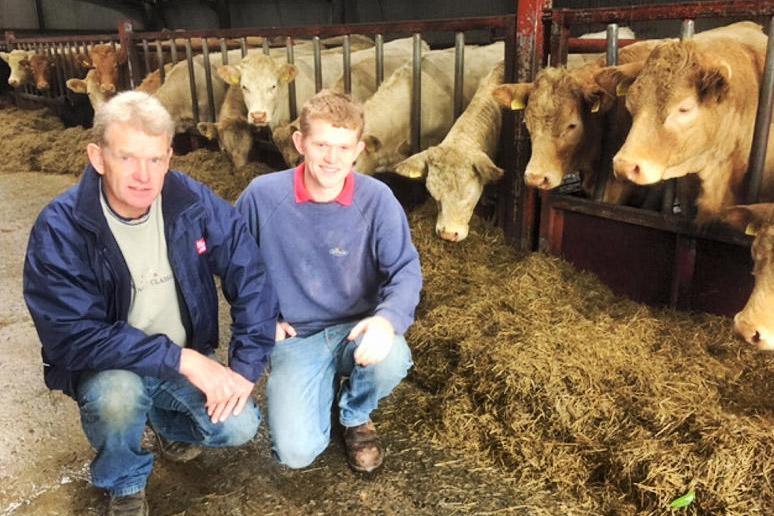Can synchronisation offer suckler farmers a viable way to increase the use of AI on cows?
Yes it can according to Dr Francis Lively of AFBI. He outlined how synchronisation has worked for a number of suckler farms at the recent NBA farm walk hosted by Stephen Heenan, Clough, Co Down.
Less than 20% of suckler herds in Northern Ireland currently use AI sires for breeding. Land fragmentation, labour, handling facilities, heat detection and predominantly spring calving herd profiles are all key reasons for the low uptake of AI.
Following a proven synchronisation programme with fixed time insemination facilitates greater use of AI as it removes the necessity for heat detection at first service.
Cows are inseminated at a set time meaning a farmer can organise to have an AI technician booked in advance.
Handling
For spring calving herds, the programme should be designed to have minimal handlings to reduce the amount of time spent bringing cows in and out of handling facilities.
Recent trial work carried out by AFBI on 12 commercial farms across Northern Ireland managed to get handlings down to an average of three for heifers and five for cows, which includes insemination.
A synchronisation programme using CIDRS is outlined in Table 1. Cows and heifers were inseminated 72 hours after the removal of the CIDRS.
Conception rate for cows was typically 62%. For heifers, conception rate averaged 65% where CIDRS were left in animals for a period of up to 10 days. However, where CIDRS were removed after five days conception rates averaged 53%.
Management
Management within herds had a significant bearing on conception rates. Herd fertility, cow nutrition and minimising stress with good handling facilities resulted in conception rates as high as 84% in heifers and 79% in cows making the prospect of AI a viable alternative to natural service.
Converse to this, synchronisation will not increase conception rates where cow fertility is naturally poor or herd management is below optimum. Similarly, conception rates will be low if guidelines are not properly followed.
In practice
Host farmer Stephen Heenan runs 70 spring calving suckler cows and has been synchronising his replacement heifers for three years. AI sires with strong maternal and terminal traits have been selected to inseminate heifers.
“We inseminated 22 heifers this summer and 15 held to AI which is a conception rate of 68% to first service. An Angus stock bull was used to serve repeats. The cost of the programme and insemination is roughly £35/head, but the value of tighter calving and improved calf performance more than covers the cost of the CIDR and AI. “
Stephen outlined to the 200-strong crowd who attended the event that eight heifers born in 2016 as a result of synchronisation are in-calf and ready to calve from mid-March 2018.
“They have performed great and are well developed to cope with calving at 24 months of age. We plan to keep using this method to breed replacements as we get a better choice of maternal genetics for breeding.”






 This is a subscriber-only article
This is a subscriber-only article










SHARING OPTIONS: